Whether for kitchen cabinets or bathroom vanities, oak is a highly popular choice, primarily due to its natural grain—a feature that cannot be replicated by other materials. However, despite their popularity, oak cabinets do have some drawbacks. For those looking to renovate their kitchen or select materials for a project, understanding both the advantages and disadvantages of oak cabinets is key to making an informed choice based on practical needs.
Oak Cabinets’ Advantages
1. Exceptional Durability and Longevity
Oak is a dense hardwood with high compressive strength and wear resistance. It can withstand daily impacts, scratches from tableware, and friction from frequent opening and closing of cabinet doors, maintaining its structural integrity for decades. Unlike synthetic materials that are prone to deformation or cracking over time, well-maintained oak cabinets can even become heirlooms passed down through generations.
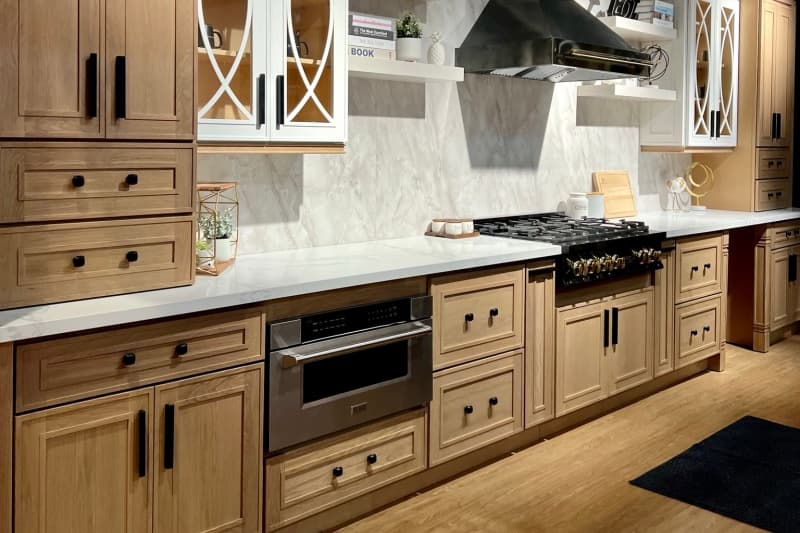
2. Timeless Aesthetic Appeal
The natural grain of oak is unique—each cabinet has distinct patterns ranging from straight lines to subtle waves, presenting a warm and natural visual effect. It complements various interior styles, from traditional farmhouse and rustic to modern minimalist. As trends change, the classic charm of oak grain never fades, ensuring the cabinets remain stylish for years.
3. Natural Environmental Friendliness
Compared to synthetic materials that may release formaldehyde and other harmful volatile organic compounds (VOCs) over time, solid oak is a natural material with minimal environmental impact. It does not contain toxic additives, making it safer for households with children, elderly people, or individuals with allergies, creating a healthier living environment.
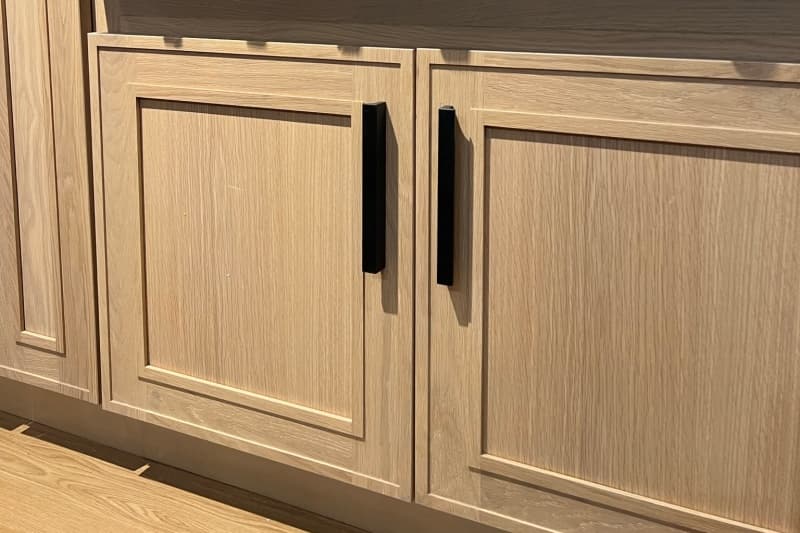
Oak Cabinets’ Disadvantages
1. High Cost: A Premium Price Tag for Natural Wood
The most obvious disadvantage of oak cabinets is their price. While many people are drawn to oak, its cost is significantly higher compared to synthetic materials such as MDF, particleboard, and PVC. Nowadays, surface treatments can mimic oak grain, but there remains a quality gap between these imitations and real oak.
The high cost of oak stems from its slow growth rate. Additionally, processes like cutting, sanding, and painting further drive up the price. For projects with limited budgets, the exorbitant procurement cost of oak cabinets stands as the biggest drawback.
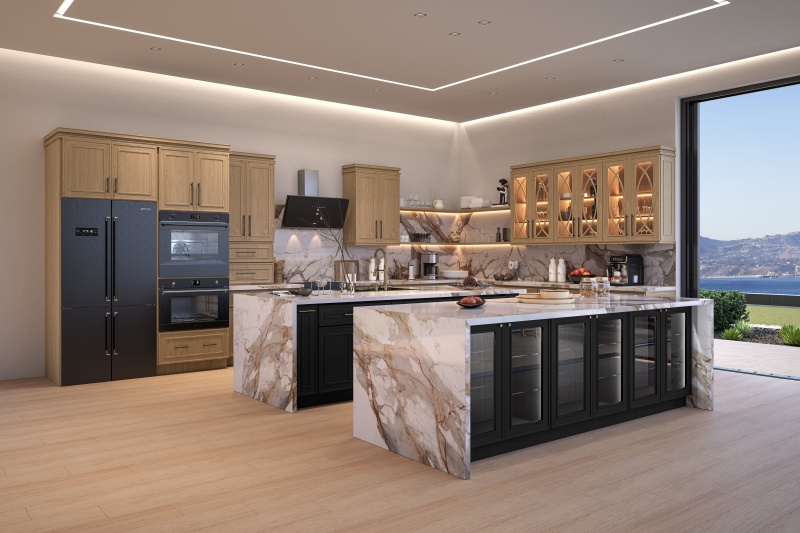
2. Susceptibility to Moisture: A Risk in Humid Spaces
Oak is a porous hardwood, meaning it absorbs moisture when exposed to humid environments. If left in kitchens or bathrooms for extended periods—especially with water stains on the surface—the following issues may arise:
While painting can mitigate this issue, the protective effect is not permanent. Coatings will wear over time, requiring repainting to maintain water resistance and increasing long-term maintenance costs.
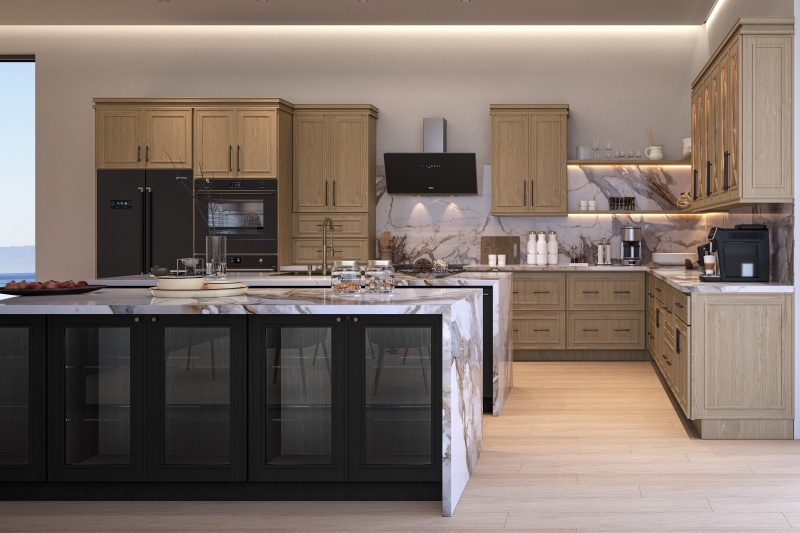
3. Heavy Weight: Installation Challenges and Structural Demands
Oak is much heavier than softwoods and artificial materials, leading to two main problems:
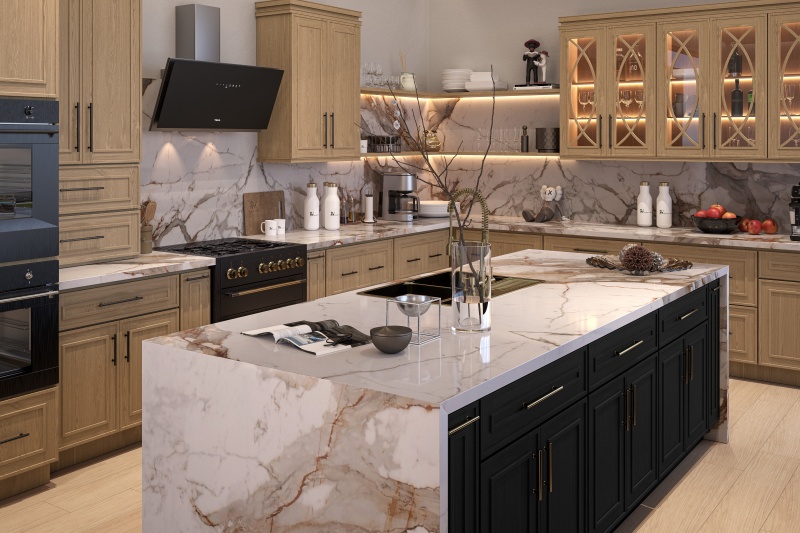
Should You Avoid Oak Cabinets Entirely?
Not at all—oak’s durability and timeless appearance still make it an excellent choice for specific spaces. However, after understanding its disadvantages, you can mitigate their impact by considering these solutions:
Conclusion
Oak cabinets offer a texture unmatched by other boards. Though they come with high costs, strict environmental requirements, and demanding maintenance, oak exudes a sense of elegance and even has a natural fragrance. Determining whether oak is suitable for your project requires weighing these advantages and disadvantages and evaluating whether there are more practical alternatives available.